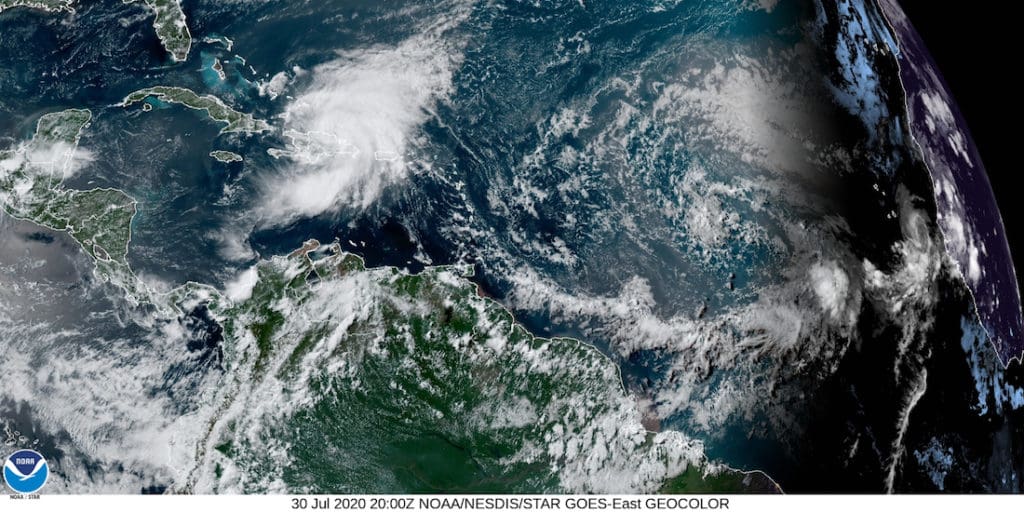
Atmospheric and oceanic conditions are primed to fuel storm development in the Atlantic, leading to what could be an “extremely active” season, according to forecasters with the National Oceanic and Atmospheric Administration’s Climate Prediction Center, a division of the National Weather Service.
In a news release issued Thursday, the agency released its annual August update to the Atlantic Hurricane Season Outlook, initially issued in May. The NOAA update came a day after the Tropical Weather Project at Colorado State University issued a similar warning. NOAA urged residents to complete preparations before a storm begins bearing down on the islands.
The 2020 Atlantic hurricane season has been off to a rapid pace with a record-setting nine named storms so far, NOAA said in its update and has the potential to be one of the busiest on record. Historically, an average of only two named storms have formed by early August, and the ninth named storm typically does not form until Oct. 4. An average season produces 12 named storms, including six hurricanes of which three become major hurricanes (Category 3, 4 or 5).
“This is one of the most active seasonal forecasts that NOAA has produced in its 22-year history of hurricane outlooks,” U.S. Secretary of Commerce Wilbur Ross said. NOAA is a branch of the Department of Commerce. “We encourage all Americans to do their part by getting prepared, remaining vigilant and being ready to take action when necessary.”
The updated outlook calls for 19 to 25 named storms (that is, storms with winds of at least 39 mph). Of those, seven to 11 will become hurricanes (with winds of 74 mph or greater), including three to six which are expected to become major hurricanes (storms with winds of 111 mph or greater). This updated forecast includes the nine named storms to date.
“This year, we expect stronger and longer-lived storms than average, and our predicted ACE range extends well above NOAA’s threshold for an extremely active season,” said Gerry Bell, a lead seasonal hurricane forecaster at NOAA’s Climate Prediction Center.
Current oceanic and atmospheric conditions that make an “extremely active” hurricane season possible are warmer-than-average sea surface temperatures in the tropical Atlantic Ocean and the Caribbean Sea, reduced vertical wind shear, weaker tropical Atlantic trade winds and an enhanced west African monsoon. These conditions are expected to continue for the next several months. A main climate factor behind these conditions is the ongoing warm phase of the Atlantic Multi-Decadal Oscillation, which reappeared in 1995 and has been favoring more active hurricane seasons since that time.
Another contributing climate factor this year is the possibility of La Nina developing in the months ahead. Indicative of cooler-than-average sea surface temperatures in the equatorial regions of the eastern Pacific Ocean, La Nina can further weaken the wind shear over the Atlantic Basin, allowing storms to develop and intensify.
NOAA’s forecast pointed out that the hurricane season outlook is for overall seasonal activity and is not a landfall forecast. Landfalls are largely determined by short-term weather patterns, which are predictable within only about a week of a storm potentially reaching a coastline. NOAA’s National Hurricane Center provides tropical weather outlooks out to five days in advance, provides track and intensity forecasts for individual storms and issues watches and warnings for specific tropical storms, hurricanes and the associated storm surge.





